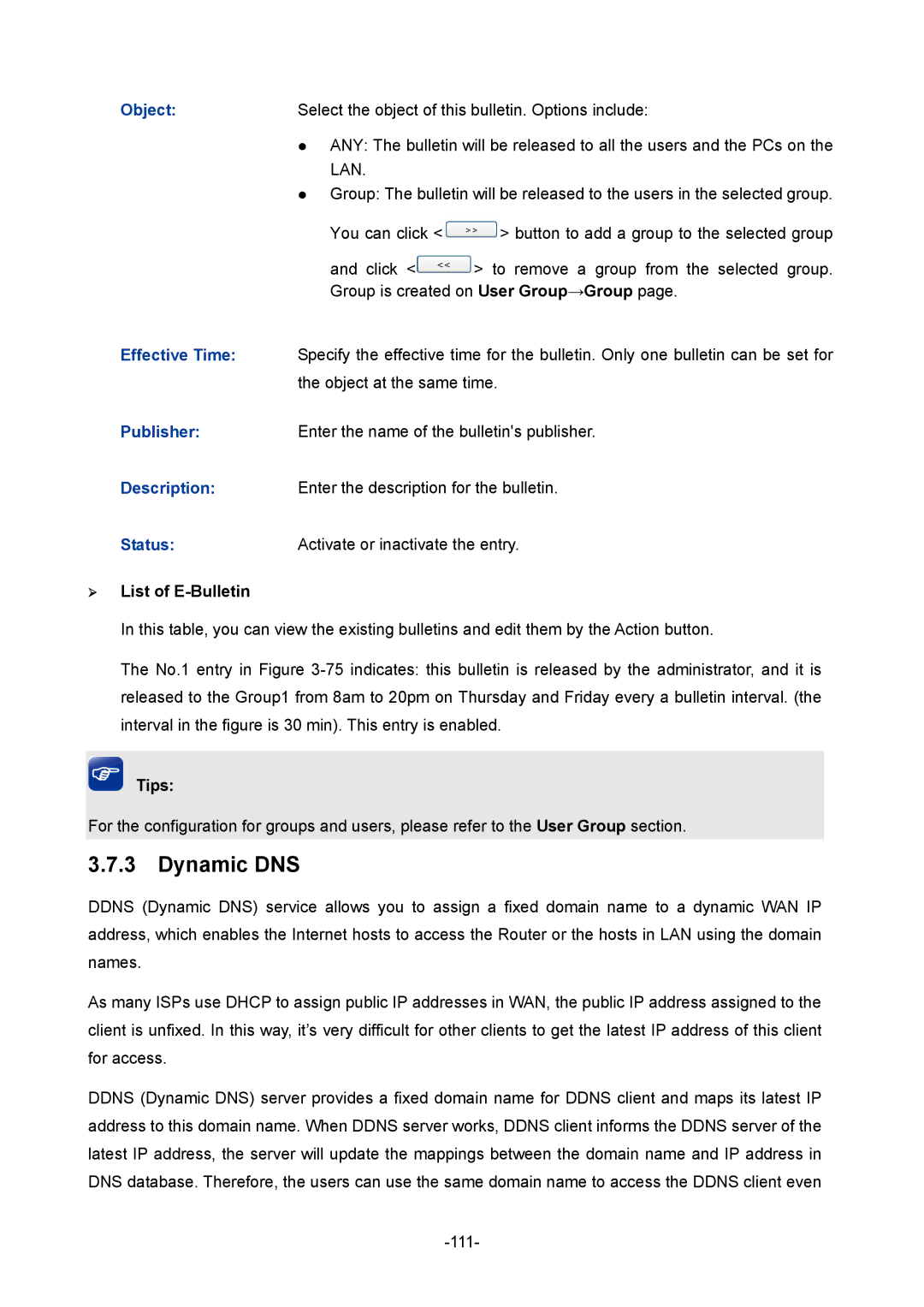
Object: | Select the object of this bulletin. Options include: | |
| ANY: The bulletin will be released to all the users and the PCs on the | |
| LAN. |
|
| Group: The bulletin will be released to the users in the selected group. | |
| You can click < | > button to add a group to the selected group |
| and click < | > to remove a group from the selected group. |
| Group is created on User Group→Group page. | |
Effective Time: | Specify the effective time for the bulletin. Only one bulletin can be set for | |
| the object at the same time. | |
Publisher: | Enter the name of the bulletin's publisher. | |
Description: | Enter the description for the bulletin. | |
Status: | Activate or inactivate the entry. | |
List of E-Bulletin
In this table, you can view the existing bulletins and edit them by the Action button.
The No.1 entry in Figure
Tips:
For the configuration for groups and users, please refer to the User Group section.
3.7.3 Dynamic DNS
DDNS (Dynamic DNS) service allows you to assign a fixed domain name to a dynamic WAN IP address, which enables the Internet hosts to access the Router or the hosts in LAN using the domain names.
As many ISPs use DHCP to assign public IP addresses in WAN, the public IP address assigned to the client is unfixed. In this way, it’s very difficult for other clients to get the latest IP address of this client for access.
DDNS (Dynamic DNS) server provides a fixed domain name for DDNS client and maps its latest IP address to this domain name. When DDNS server works, DDNS client informs the DDNS server of the latest IP address, the server will update the mappings between the domain name and IP address in DNS database. Therefore, the users can use the same domain name to access the DDNS client even
